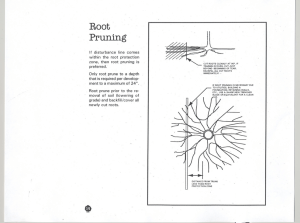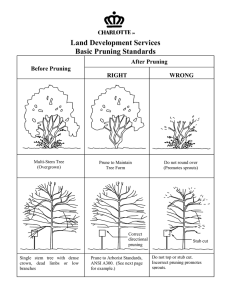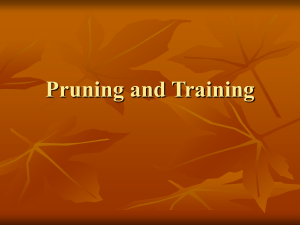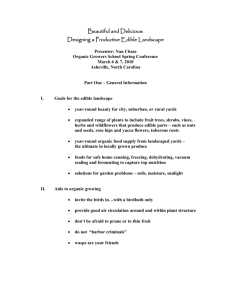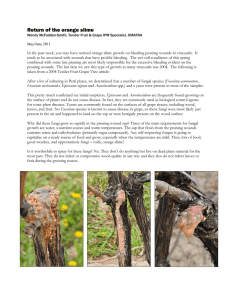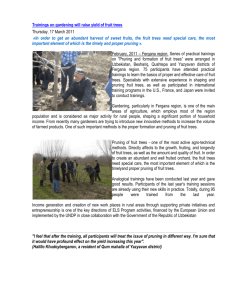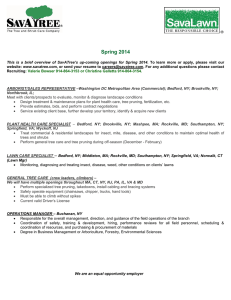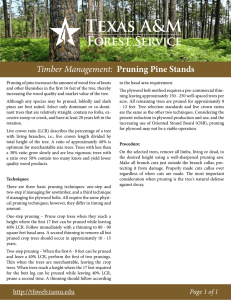What are the benefits of winter pruning
advertisement
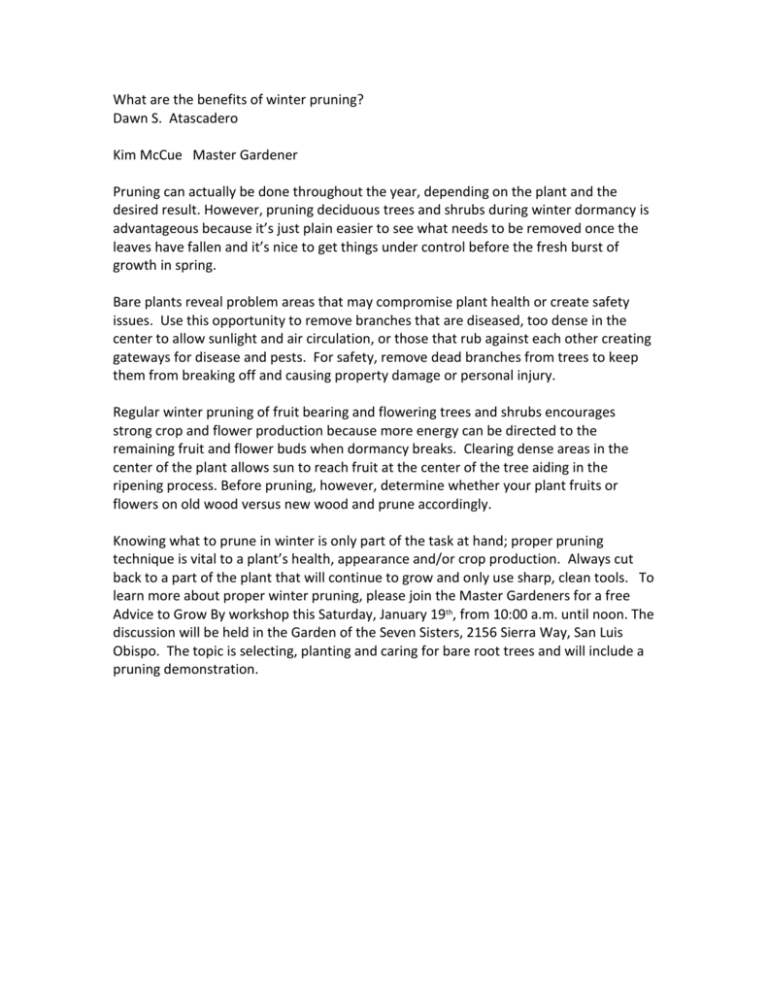
What are the benefits of winter pruning? Dawn S. Atascadero Kim McCue Master Gardener Pruning can actually be done throughout the year, depending on the plant and the desired result. However, pruning deciduous trees and shrubs during winter dormancy is advantageous because it’s just plain easier to see what needs to be removed once the leaves have fallen and it’s nice to get things under control before the fresh burst of growth in spring. Bare plants reveal problem areas that may compromise plant health or create safety issues. Use this opportunity to remove branches that are diseased, too dense in the center to allow sunlight and air circulation, or those that rub against each other creating gateways for disease and pests. For safety, remove dead branches from trees to keep them from breaking off and causing property damage or personal injury. Regular winter pruning of fruit bearing and flowering trees and shrubs encourages strong crop and flower production because more energy can be directed to the remaining fruit and flower buds when dormancy breaks. Clearing dense areas in the center of the plant allows sun to reach fruit at the center of the tree aiding in the ripening process. Before pruning, however, determine whether your plant fruits or flowers on old wood versus new wood and prune accordingly. Knowing what to prune in winter is only part of the task at hand; proper pruning technique is vital to a plant’s health, appearance and/or crop production. Always cut back to a part of the plant that will continue to grow and only use sharp, clean tools. To learn more about proper winter pruning, please join the Master Gardeners for a free Advice to Grow By workshop this Saturday, January 19th, from 10:00 a.m. until noon. The discussion will be held in the Garden of the Seven Sisters, 2156 Sierra Way, San Luis Obispo. The topic is selecting, planting and caring for bare root trees and will include a pruning demonstration.
